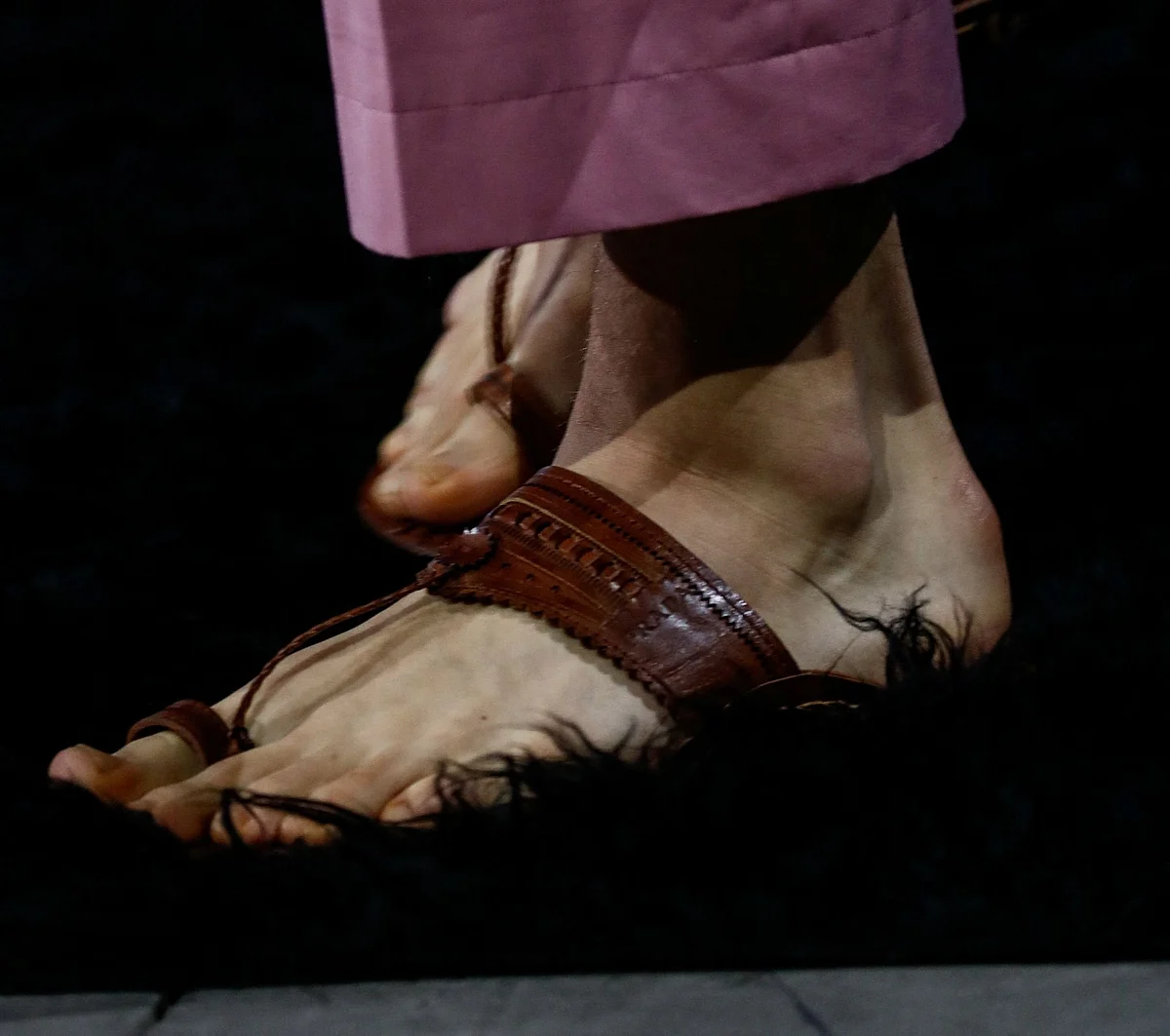The global fashion landscape has once again been rocked by a significant cultural appropriation debate, this time centering on luxury powerhouse Prada and its recently launched open-toe sandals. The footwear, which bore a striking resemblance to the traditional Indian Kolhapuri slipper, immediately ignited a widespread furore among Indian communities and cultural commentators worldwide, prompting swift accusations of insensitivity and a lack of acknowledgment for the design’s ancient origins.
For centuries, the Kolhapuri slipper has been a quintessential element of Indian fashion, deeply embedded in the cultural heritage of Maharashtra, India. Renowned for its unique design, durability, and intricate craftsmanship, these handcrafted leather sandals are more than just footwear; they are a symbol of regional identity and a testament to generations of artisanal skill. The traditional Kolhapuri often features distinctive patterns and a robust build, making it a beloved staple that carries significant cultural weight and historical lineage.
The outrage stemmed precisely from this deep-rooted cultural significance. Critics vehemently argued that Prada, by seemingly co-opting the Kolhapuri design without proper attribution or engagement with its source, was engaging in cultural appropriation. The core concern revolved around a major fashion brand profiting from a culturally important design while overlooking the intellectual and creative labor of the communities that originated and perfected it. This perceived oversight sparked intense discussion across social media platforms and traditional news outlets.
In response to the mounting backlash, Prada eventually issued a statement acknowledging the ancient Indian origins of its controversial sandal design. While the statement aimed to quell the criticism, it underscored the ongoing challenges faced by the fashion industry in navigating cultural borrowing. The incident highlighted the critical imperative for global brands to engage respectfully and thoughtfully with traditional designs and heritage from diverse cultures, moving beyond mere aesthetic inspiration to genuine recognition and collaboration.
The “Kolhapuri Row” serves as a potent reminder for multinational fashion houses to exercise rigorous cultural diligence when drawing inspiration from global traditions. Brands are increasingly expected to undertake thorough research, understand the historical and social contexts of designs, and, crucially, establish transparent dialogues with source communities. Such proactive measures can help prevent future misrepresentation and disrespect, fostering a more equitable and appreciative approach to cross-cultural design.
This latest fashion controversy underscores a broader societal shift towards greater accountability in the creative industries. As consumers become more informed and culturally aware, the onus is on brands like Prada to not only create aesthetically pleasing products but also to demonstrate ethical sourcing, cultural sensitivity, and a genuine respect for the heritage from which their inspirations are drawn. The Kolhapuri incident stands as a pivotal moment, reinforcing the importance of authenticity and recognition in the intricate tapestry of global fashion.
Discover more from The Time News
Subscribe to get the latest posts sent to your email.






